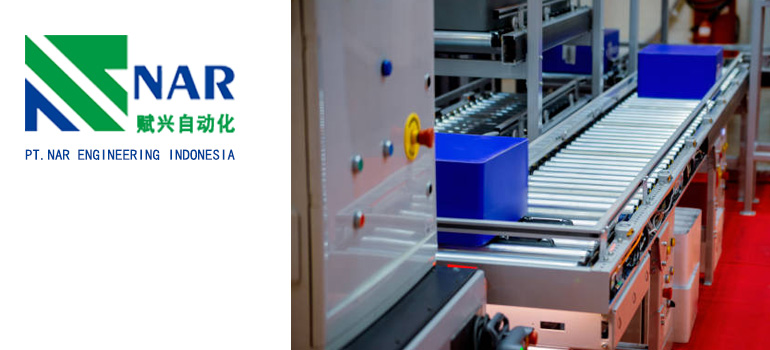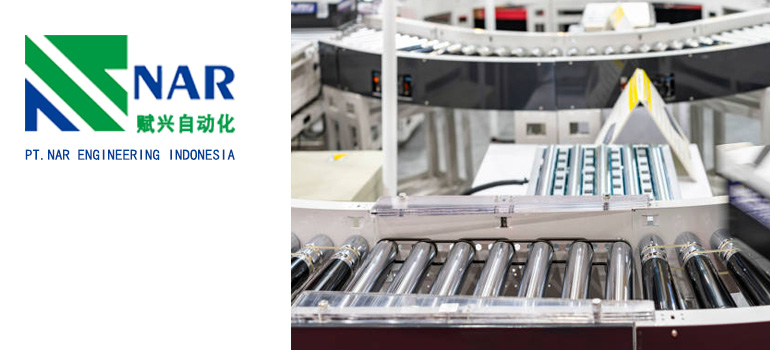Summary:
Boost Productivity: Essential Conveyor Guide Accessories Decoded
What Are Conveyor Guide Accessories?
Importance of Proper Guide Accessories
Types of Guide Accessories for Conveyors
Optimizing Conveyor Efficiency with Advanced Accessories
What Are Conveyor Guide Accessories?
“Conveyor guide accessories” refer to various components and add-ons specifically designed to optimize the performance, efficiency, and safety of conveyor systems. These accessories are instrumental in ensuring smooth material handling, preventing product damage, and enhancing overall productivity in industrial settings.
Common conveyor guide accessories include:
Rollers and Idlers: These components provide support and guidance to the conveyor belt, ensuring proper alignment and reducing friction during operation.
Belt Guides: Belt guides help in controlling the movement of the conveyor belt, preventing it from wandering off track and maintaining consistent material flow.
Side Rails: Side rails are installed along the edges of the conveyor to contain and guide the products, preventing them from spilling over or getting damaged during transport.
Impact Beds: Impact beds are positioned beneath the conveyor belt to absorb the shock and impact of heavy loads, protecting both the belt and the conveyor structure from damage.
Wear Strips: Wear strips are placed along the conveyor frame to reduce friction and abrasion, extending the lifespan of the belt and other conveyor components.
Tracking Systems: Tracking systems help in maintaining proper alignment of the conveyor belt, preventing it from veering off course and minimizing downtime caused by misalignment issues.
Transition Plates: Transition plates facilitate smooth transfer of materials between different sections of the conveyor system, reducing the risk of jams and product damage.
Scrapers and Cleaners: These accessories help in removing debris, dust, and other contaminants from the conveyor belt, ensuring optimal cleanliness and preventing material buildup.
Overall, conveyor guide accessories play a crucial role in enhancing the efficiency, reliability, and longevity of conveyor systems, contributing to seamless material handling operations in various industries.
Importance of Proper Guide Accessories

The importance of proper guide accessories for conveyor systems cannot be overstated, as they play a pivotal role in ensuring the smooth and efficient operation of the entire conveyor setup. Here are several key reasons why investing in the right guide accessories is crucial:
Enhanced Productivity: Proper guide accessories help maintain the alignment and stability of the conveyor belt, reducing the risk of jams, misalignments, and downtime. This leads to uninterrupted material flow and increased productivity within the operation.
Minimized Product Damage: Guide accessories such as belt guides and side rails prevent products from shifting or falling off the conveyor during transport. By securely containing the materials, these accessories minimize the risk of damage or loss, preserving product quality and reducing waste.
Improved Safety: Well-designed guide accessories contribute to a safer work environment by reducing the likelihood of accidents and injuries. They help prevent material spillage, which can create slip and fall hazards, as well as minimize the risk of entanglement or contact with moving conveyor components.
Extended Equipment Lifespan: Guide accessories like impact beds and wear strips provide added protection to conveyor components, such as belts, rollers, and frames, by absorbing impact forces and reducing friction. This helps prevent premature wear and tear, prolonging the lifespan of the equipment and reducing maintenance costs.
Optimized Material Handling: Properly aligned conveyor belts, guided by appropriate accessories, ensure that materials are transported smoothly and accurately from one point to another. This promotes efficient material handling processes, streamlines workflow, and facilitates timely delivery of goods or products.
Compliance with Industry Standards: Many industries have specific regulations and standards governing conveyor system operation and safety. Using the right guide accessories ensures compliance with these standards, avoiding potential fines or penalties for non-compliance.
Customization and Adaptability: Guide accessories are available in a variety of configurations and materials to suit different conveyor setups and applications. They can be customized to meet specific requirements, such as conveyor width, belt type, and material handling needs, providing flexibility and adaptability to diverse operational environments.
In summary, investing in proper guide accessories for conveyor systems is essential for maximizing productivity, ensuring safety, prolonging equipment lifespan, and achieving efficient material handling operations in industrial settings.
Types of Guide Accessories for Conveyors
There are various types of guide accessories designed to optimize the performance and functionality of conveyor systems. These accessories play a crucial role in maintaining proper alignment, controlling material flow, and preventing product damage. Here are some common types of guide accessories for conveyors:
Rollers and Idlers: Rollers and idlers provide support and guidance to the conveyor belt, ensuring smooth movement and reducing friction. They are available in different configurations, including troughing idlers, return idlers, and impact idlers, and can be customized to match specific conveyor specifications.
Belt Guides: Belt guides help in controlling the lateral movement of the conveyor belt, preventing it from wandering off track and maintaining alignment. They are typically installed along the edges of the conveyor frame and can be adjustable to accommodate different belt widths.
Side Rails: Side rails are installed along the edges of the conveyor to contain and guide the products as they move along the conveyor belt. They prevent items from spilling over or falling off the conveyor, ensuring smooth material flow and minimizing product damage.
Impact Beds: Impact beds are positioned beneath the conveyor belt to absorb the shock and impact of heavy loads, protecting both the belt and the conveyor structure from damage. They help reduce maintenance costs and downtime by minimizing wear and tear on conveyor components.
Wear Strips: Wear strips are placed along the conveyor frame to reduce friction and abrasion between the belt and the conveyor structure. They prolong the lifespan of the belt and other conveyor components by minimizing wear and preventing material buildup.
Tracking Systems: Tracking systems help maintain proper alignment of the conveyor belt, preventing it from veering off course and reducing the risk of misalignment-related issues. They use various mechanisms, such as sensors, rollers, and guides, to ensure that the belt stays centered on the conveyor frame.
Transition Plates: Transition plates facilitate smooth transfer of materials between different sections of the conveyor system, such as between inclines and declines or between different types of belts. They help minimize product jams and ensure seamless material handling.
Scrapers and Cleaners: Scrapers and cleaners remove debris, dust, and other contaminants from the conveyor belt, ensuring optimal cleanliness and preventing material buildup. They help maintain efficient operation and prevent damage to conveyor components.
Optimizing Conveyor Efficiency with Advanced Accessories
Optimizing conveyor efficiency with advanced accessories is crucial for maximizing productivity, minimizing downtime, and ensuring smooth material handling operations. Here are several advanced accessories that can significantly enhance conveyor efficiency:
Tracking Systems:
Precision Tracking Rollers: These specialized rollers feature built-in sensors or mechanisms that continuously monitor and adjust the alignment of the conveyor belt, ensuring it stays centered and minimizes the risk of misalignment-related issues.
Automated Tracking Systems: Advanced tracking systems utilize sophisticated control algorithms and automation technology to dynamically adjust the position of the conveyor belt in real-time, optimizing tracking accuracy and reducing the need for manual adjustments.
Impact Beds:
Shock-Absorbing Impact Beds: Advanced impact beds incorporate innovative cushioning materials and design features to absorb and dissipate impact forces more effectively, reducing stress on the conveyor belt and extending its lifespan.
Adjustable Impact Beds: These impact beds allow operators to customize the level of cushioning and support provided to accommodate different load weights and impact velocities, optimizing performance for varying operational conditions.
Belt Cleaners:
High-Efficiency Belt Cleaners: Advanced belt cleaners utilize advanced materials and design configurations to effectively remove debris, dust, and carryback from the conveyor belt, minimizing the risk of material buildup and improving overall cleanliness.
Self-Adjusting Belt Cleaners: These belt cleaners feature self-adjusting mechanisms that automatically maintain the optimal cleaning pressure and contact angle with the conveyor belt, ensuring consistent and efficient cleaning performance.
Roller Innovations:
Low-Friction Roller Bearings: Advanced roller bearings incorporate low-friction materials and lubrication systems to reduce rolling resistance and energy consumption, optimizing conveyor efficiency and reducing operating costs.
Precision Machined Rollers: High-precision machining techniques ensure uniform roller dimensions and surface finish, minimizing belt wear and vibration while maximizing conveying accuracy and efficiency.
Material Handling Sensors:
Load-Cell Conveyor Rollers: These specialized rollers are equipped with integrated load cells that accurately measure the weight of conveyed materials in real-time, allowing for precise monitoring and control of material flow and inventory levels.
Proximity Sensors: Advanced proximity sensors detect the presence of objects or materials on the conveyor belt with high accuracy and reliability, enabling automated sorting, diverting, and tracking of items for optimized throughput and efficiency.
By incorporating these advanced accessories into your conveyor system, you can optimize efficiency, reliability, and performance, ultimately enhancing overall productivity and profitability.

